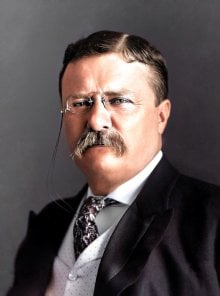"Absence and death are the same - only that in death there is no suffering"
About this Quote
Theodore Roosevelt’s reflection draws a poignant parallel between absence and death, suggesting that both create a void in human experience. When someone is absent, even if alive, the emotional experience for those left behind echoes the ache of loss. Absence, whether through distance, estrangement, or emotional withdrawal, generates longing and pain for the presence of the other. This suffering can be continuous, rekindled every time memories arise or hopes for reunion are dashed. The person remains alive somewhere in the world, but the connection is severed or unreachable, fostering a kind of living grief.
Death, Roosevelt asserts, shares a similar effect: the one we love or need is gone from our life. Yet, he identifies a critical distinction, death’s finality ends all suffering. For the departed, pain, longing, and desire cease; for those left behind, although grief persists, there is sometimes a clarity or acceptance that absence does not allow. Absence maintains the wound, reopening it with reminders or unresolved feelings. Hope may linger, tormenting or sustaining, making the absence an ongoing source of anguish.
Roosevelt’s words speak to the universal human condition of coping with separation. He alludes to the paradox that losing someone to death is, in some respects, less torturous than losing someone to life’s unpredictable distances, because death is conclusive. The dead suffer no more, while the absent and those missing them continue to struggle with pain, regret, or yearning. Thus, his reflection meditates on how the heart metabolizes loss, sometimes finding the unalterable truth of death less cruel than the ambiguity and endurance of absence. In both cases, a person is gone from our lives, but absence uniquely perpetuates suffering, reminding us that the emotional toll of separation is not limited to bereavement, but encompasses the entire spectrum of human relationships and their fragilities.
More details
About the Author

